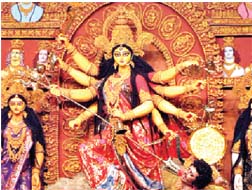 Navratri is celebrated as the victory of good over evil. The nine nights of Navratri symbolise the nine nights of the war between Goddess Durga and Mahishasura. Each day of the nine-day festival is dedicated to the worship of different forms of Maa Durga unfolding the religious importance of the occasion.
Navratri is celebrated as the victory of good over evil. The nine nights of Navratri symbolise the nine nights of the war between Goddess Durga and Mahishasura. Each day of the nine-day festival is dedicated to the worship of different forms of Maa Durga unfolding the religious importance of the occasion.
Celebrated as the festival of dance and worship, of the victory of bad over good, the nine-day festival of Navratri in Hindu religion is dedicated to the nine manifestations of Goddess Durga.
Maa Shailputri?Pratipada – First Day Another Related Matter?: Navratri Festive Food Mood? ? |
The festival is celebrated for nine nights twice in a year. The first Navratri falls in the month of March-April and are known as Chaitra Navratri. The other are celebrated in the month of September-October and are called Sharad Navratri. Both occasions signify major climatic changes and are believed to be sacred period for worshipping Maa Durga.
Maa Brahmacharini ?
Another Related Matter: Kut tu (Buckwheat) Khichdi ? ?? |
Like other festivals of India, Navratri also has a significant meaning attached to it. In Hindu mythology the festival is hugely celebrated as the victory Goddess Shakti (Maa Durga) over demon Mahishasura-the demon that had started killing innocent lives on earth and set out to win the seven lokas after obtaining invincible powers from Lord Shiva. In order to save innocent lives, all the Gods united their supreme powers to create divine warrior goddess, Durga. Maa Durga then entered a war with Mahishasura, which extended for nine long days and after fighting hard with him for nine days, she finally killed Mahishasura on the tenth day.
Maa Chandraghanta?Tritiya – Third Day Another Related Matter: Peanut(Shengdanyachi) Amti ? |
Goddess Shakti in the nine forms, Maa Shailputri, Maa Brahmachaarini, Maa Chandraghanta, Maa Kushmaanda, Skanda Maa, Maa Kaatyayani, Maa Kaalratri, Maa Mahagauri and Maa Sidhidaarti is worshipped during these nine days for good heath, wealth, prosperity, knowledge and auspiciousness.
Rituals for Navratri Puja
More than observing nine day fasts and venerating Maa Durga in her various forms during Navratri one needs to devoutedly work towards inculcating good virtues in him or herself and do good for society. If you fast for nine days and eat food that are specially recommended during Navratri and follow the age old ways of conducting Navratri puja and the daily discipline of staying away from Tamsik food, it will help your body rid of toxins and adapt itself to the changing climate.
Maa Kushmanda ?
Another Related Matter : Paneer Kheer? |
There is no rule that everyone has to fast during Navratri, even if one cannot observe the fast he can simply recite mantra “Om Ang Haring Kalim Shree Maha Durgay Namah”.
While observing fasts one should be careful about his/her aahar (food), vyavhaar (behaviour) and acharan (character) during these sacred days.
Maa Skandamata ?
Another Related Matter : ?? Palak Ke Pakore ? |
Maa Katyayani?Shashti – Sixth Day ?Another Related Matter : Khatta Meetha Pumpkin (Kaddu) ?? |
Aahar – One should avoid non vegetarian foods and consume “Satvik” food like fruits, Singara Ka Aata, Curd and Potatoes as they are considered to be auspicious. Usage of Onion and Garlic should be avoided.
Another Related Matter : Sama Chawal Ki Idli? |
Vyavhaar and Acharan – During the festival all devotees should worship Maa Durga with spiritual emotion. Like all other festivals, foremost clean your house properly as you are inviting Maa Durga into the home. Usually this is done on the Amavasya (New Moon), a day before the beginning of Navratri.
Maa Maha Gauri ? Durga is venerated as Maha Gauri on this day. Extremely beautiful, fair as snow, worship of the goddess washes away all sins of past, present and future. The goddess is depicted adorning white clothes and rides a bull. White is the colour of the day.? Another Realed Matter : Sweet Potato Tikki |
On the first day of the Navratri, a small bed of mud (taken from any auspicious place) is prepared in the puja room of the house and barley seeds are sown over it. On this bed a Kalash made of Earthen/ Copper is kept and filled with water. Above the pot a bowl filled with rice is kept.A dry Coconut wrapped with mango leaves is then kept over this Kalash. This Kalash is believed to be a symbolic form of Goddess Durga. By keeping Kalash one invocates the goddess in the Kalash.
Maa Siddhidatri ?
Another Related Matter : Farali Pattice |
On the tenth day, the shoots are about 3 – 5 inches in length. After the puja, these seedlings are pulled out and given to devotees as a blessing from god. This Kalash must not be touched during the nine days. One diya is lit close to this Kalash which is supposed to burn endlessly for nine days. This is known as Akhand Jyoti.
Many people believe that the length of the shoots determine your wealth in the coming six months. This belief could have been because India is basically an agrarian economy wherein the productivity of the land determined one”s income.
Mahaashtami
The day begins with a recital of Sanskrit hymns by the devotees; they offer prayer to the goddess. Kumari Puja or the worship of little girls as the aspect of Maa Durga is a special part of the rituals observed in a number of traditional and household pujas.
Mahanavami
The festival of Navratri culminates in Mahanavami. On this day Kanya Puja is performed. Nine young girls representing the nine forms of Goddess Durga are worshiped. Their feet are washed as a mark of respect for the Goddess and then they are offered food mainly consisting of kala chana, halwa and poori along with coconut pieces and dakshina (money) and a red dupatta (a red embellished cloth) is offerd to the kanjaks (the young girls).
Vijaya Dashami
After the nine days of Puja, on Dashami, the final day also called Vijaya Dashami, the images of Goddess Durga are carried in processions around the locality by the devotees and finally are immersed in a nearby river or lake.?


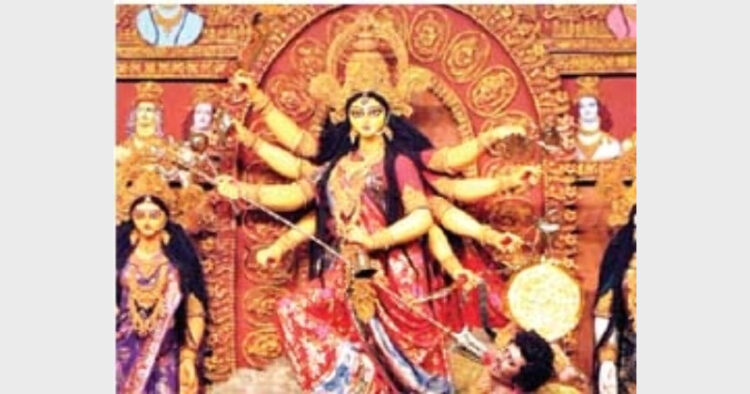
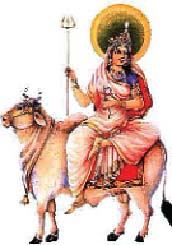
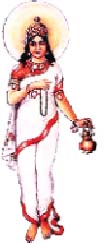 Dwitiya – Second Day
Dwitiya – Second Day 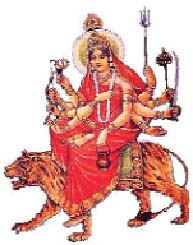
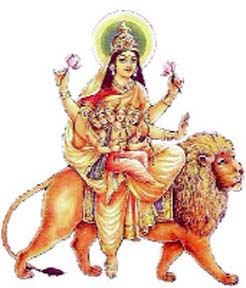 Panchami – Fifth Day
Panchami – Fifth Day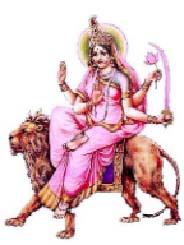
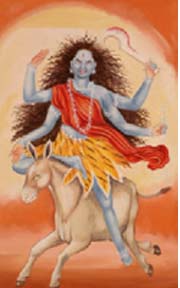 Maa Kaalratri ?Saptami – Seventh Day
Maa Kaalratri ?Saptami – Seventh Day 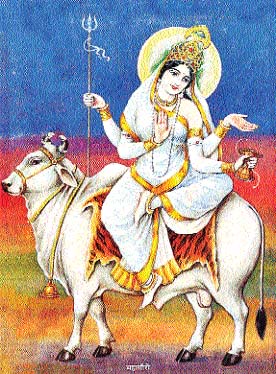
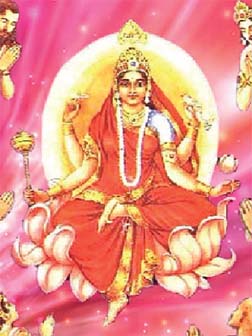 Siddhidatri is the ninth form of the goddess. It is believed she embodies all the eight siddhis. According to Hindu mythology, Shiva worshipped the goddess and was blessed with all the siddhis. Lord Shiva acquired the form of Ardhanarishvara because of the blessings of the goddess. It is customary to wear pink colour clothes on this day.?
Siddhidatri is the ninth form of the goddess. It is believed she embodies all the eight siddhis. According to Hindu mythology, Shiva worshipped the goddess and was blessed with all the siddhis. Lord Shiva acquired the form of Ardhanarishvara because of the blessings of the goddess. It is customary to wear pink colour clothes on this day.?









Comments